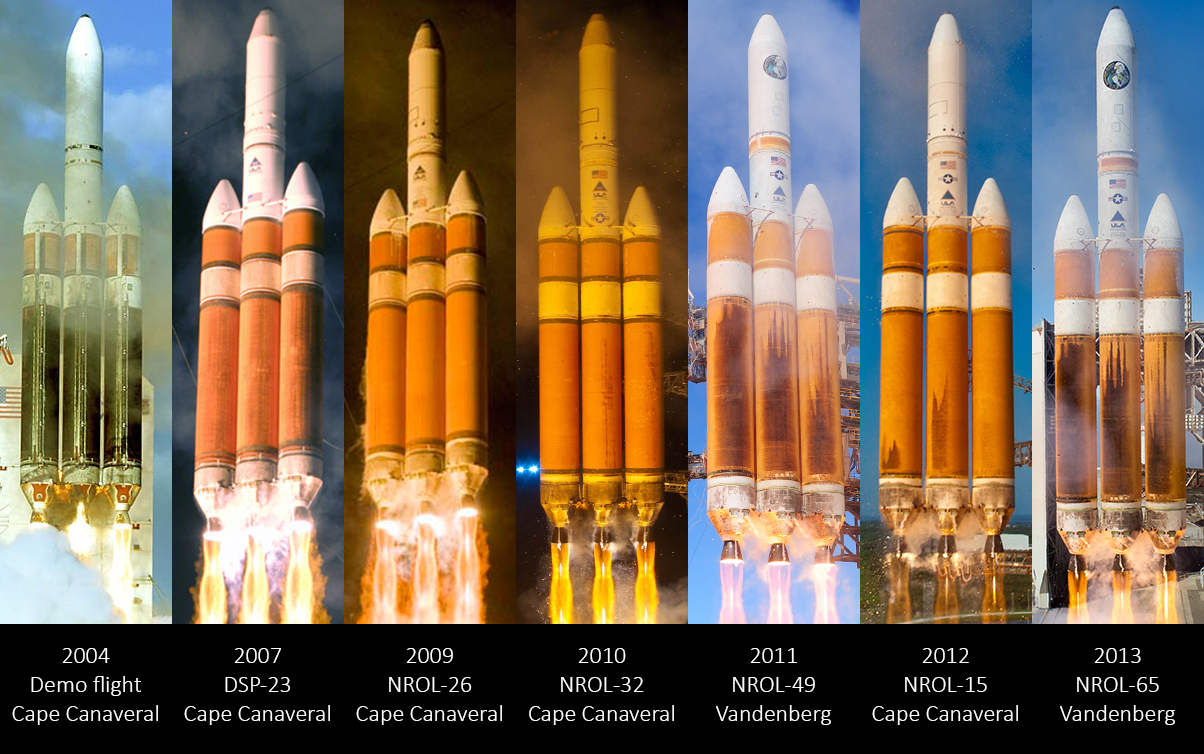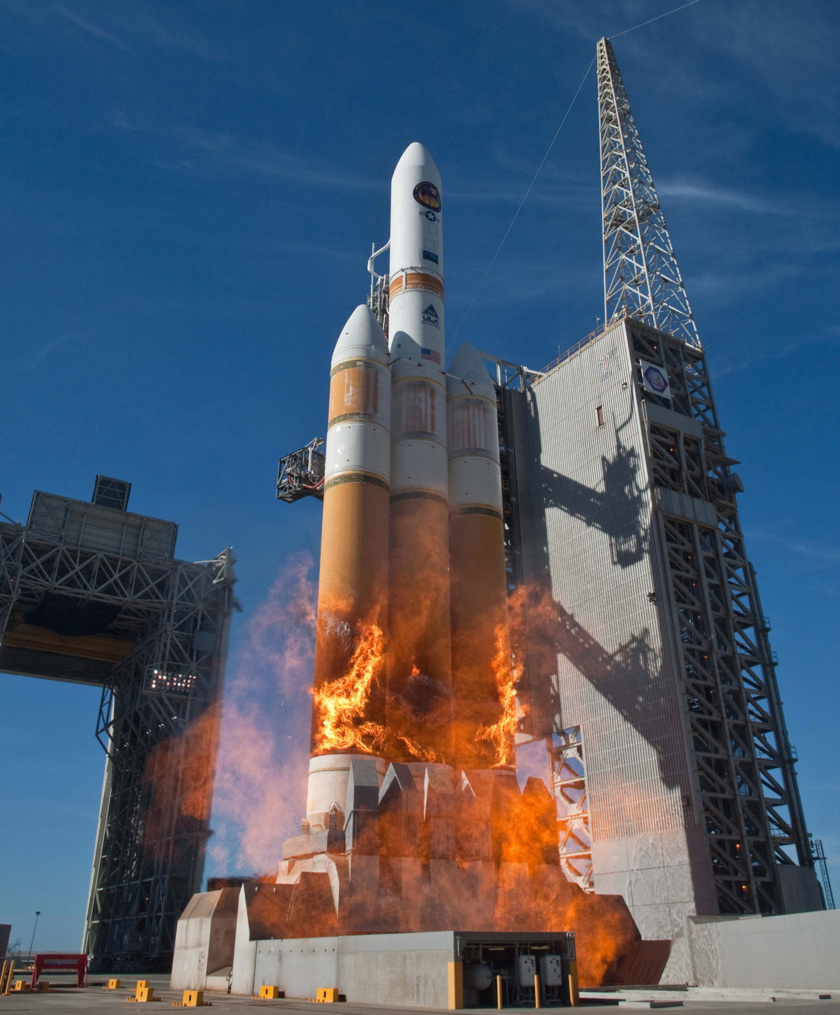Winston
Lorenzo von Matterhorn
- Joined
- Jan 31, 2009
- Messages
- 9,560
- Reaction score
- 1,748
https://www.planetary.org/blogs/jason-davis/2014/20141126-ula-burning-questions.html
The start sequence for the RS-68 main engines on the Delta IV booster must ensure that the pump speeds and combustion processes remain within limits. This complex task requires opening the main hydrogen valve at T-5 seconds, approximately two seconds prior to opening the main oxygen valve that begins the ignition process. This hydrogen lead start sequence results in unburned hydrogen exiting the engine prior to engine ignition. Since hydrogen is lighter than air, the hydrogen gas rises and drifts with the prevailing breeze. As the powerful RS-68 engines reach full thrust, the high speed engine exhaust flowing into the flame ducts creates a strong suction of surrounding air and hydrogen into the launch duct. As the air mixes with the hydrogen during this liftoff event, the hydrogen burns, creating heat that can also char the insulating materials on the launch vehicle.
The effects of the burning hydrogen at liftoff occur on all Delta IV vehicles to some extent; even Delta IV Medium vehicles with a single RS-68 engine experience the effect. But the Delta IV Heavy with three RS-68 engines produces more free hydrogen and a more noticeable flame. Beginning with a Delta IV Heavy mission from Vandenberg Air Force Base in August 2013, the Delta IV Heavy implemented a Staggered Engine Start sequence to significantly reduce the burning hydrogen. Staggered Engine Start involves starting the Starboard RS-68 engine two seconds prior to the Core and Port engines. The earlier start of the Starboard engine allows its thrust to establish a strong air current down the launch duct that sucks the hydrogen from the other two engines down and away from the vehicle. As a result, the hydrogen burning for the Vandenberg Delta IV launch last year was comparable to a Delta IV Medium vehicle with only one RS-68 engine. The Orion spacecraft's Exploration Flight Test 1 mission will be the first to use Staggered Engine Start from Cape Canaveral Air Force Station, and we expect much reduced burning of hydrogen and charring of the vehicle, similar to the launch from Vandenberg.
[video=youtube;i-zmptK7PDE]https://www.youtube.com/watch?v=i-zmptK7PDE[/video]


The start sequence for the RS-68 main engines on the Delta IV booster must ensure that the pump speeds and combustion processes remain within limits. This complex task requires opening the main hydrogen valve at T-5 seconds, approximately two seconds prior to opening the main oxygen valve that begins the ignition process. This hydrogen lead start sequence results in unburned hydrogen exiting the engine prior to engine ignition. Since hydrogen is lighter than air, the hydrogen gas rises and drifts with the prevailing breeze. As the powerful RS-68 engines reach full thrust, the high speed engine exhaust flowing into the flame ducts creates a strong suction of surrounding air and hydrogen into the launch duct. As the air mixes with the hydrogen during this liftoff event, the hydrogen burns, creating heat that can also char the insulating materials on the launch vehicle.
The effects of the burning hydrogen at liftoff occur on all Delta IV vehicles to some extent; even Delta IV Medium vehicles with a single RS-68 engine experience the effect. But the Delta IV Heavy with three RS-68 engines produces more free hydrogen and a more noticeable flame. Beginning with a Delta IV Heavy mission from Vandenberg Air Force Base in August 2013, the Delta IV Heavy implemented a Staggered Engine Start sequence to significantly reduce the burning hydrogen. Staggered Engine Start involves starting the Starboard RS-68 engine two seconds prior to the Core and Port engines. The earlier start of the Starboard engine allows its thrust to establish a strong air current down the launch duct that sucks the hydrogen from the other two engines down and away from the vehicle. As a result, the hydrogen burning for the Vandenberg Delta IV launch last year was comparable to a Delta IV Medium vehicle with only one RS-68 engine. The Orion spacecraft's Exploration Flight Test 1 mission will be the first to use Staggered Engine Start from Cape Canaveral Air Force Station, and we expect much reduced burning of hydrogen and charring of the vehicle, similar to the launch from Vandenberg.
[video=youtube;i-zmptK7PDE]https://www.youtube.com/watch?v=i-zmptK7PDE[/video]






